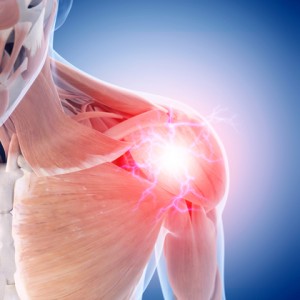
![]() By Dr. John R. Mishock, PT, DPT, DC
By Dr. John R. Mishock, PT, DPT, DC
Shoulder replacement surgeries have dramatically increased in number over the past few decades. There are nearly 53,000 shoulder replacement surgeries performed in the United States annually. Over the years there have been dramatic advances in this surgical procedure and rehabilitation allowing it to enjoy a success rate as high as 92% in improved quality of life.
Total shoulder joint replacements are performed on Individuals with, chronic shoulder pain from degenerative arthritis, unrepairable rotator cuff tears, and shoulder fractures. Prior to shoulder replacement surgery, individuals undergo a variety of conservative treatments to help reduce shoulder pain and improve function such as anti-inflammatory medications, physical therapy, and injections (steroids, plasma rich protein, stem cell). If the patient does not respond to the conservative treatments, an orthopedist can perform joint replacement surgery.
The recovery following shoulder replacement typically takes around 6 months. Initially, patients wear a protective shoulder sling and begin physical therapy as early one week post-operatively. Physical therapy will start with a thorough evaluation of the patient’s shoulder, along with their short term and long-term functional goals.
In the first phase of therapy the patient is working on: basic shoulder range-of-motion and gentle strengthening exercises. The physical therapist will use hands on techniques (manual therapy) to improve shoulder joint range-of-motion and promote healing of the soft tissues and muscle. Modalities (electrical stimulation, and ultrasound.
In the second phase of rehabilitation, we try to gain as close to full range of motion of the shoulder as possible while progressing the strength and endurance of the shoulder, scapular stabilizers (shoulder blade muscles) and core (mid-section).
In the final phase of rehabilitation exercises are progressed with an emphasis of returning the patient to the highest level of function in work or recreation. Several studies have reported between 75–90% return to the patients exercise of choice; with the highest returns are found in swimming, fishing, golf, and tennis.
At physical therapy discharge we expect 90% subjective and objective recovery. During the process we create a written home exercise program that will be followed following the rehabilitation process to reach the patients long term goals.
If pain or limited function is keeping you from doing the activities you enjoy,
We can help!
Reduce pain and increase function
Call for a FREE Phone Consultation or to schedule your visit 610-327-2600
https://mishockpt.com/request-appointment/
Gilbertsville – Skippack – Phoenixville – Boyertown – Pottstown – Limerick (inside the Spring Valley YMCA)
Appointments available 7:00am to 8:00pm, ALL locations, most days!
Saturday Appointments available
Visit our website to REQUEST AN APPOINTMENT, read informative articles, meet our physical therapy staff, and learn about our treatment philosophy.
Dr. Mishock is one of only a few clinicians with doctorate level degrees in both physical therapy and chiropractic in the state of Pennsylvania.
He has authored two books; “Fundamental Training Principles: Essential Knowledge for Building the Elite Athlete”, and “The Rubber Arm; Using Science to Increase Pitch Control, Improve Velocity, and Prevent Elbow and Shoulder Injury” both can be bought on Amazon.
